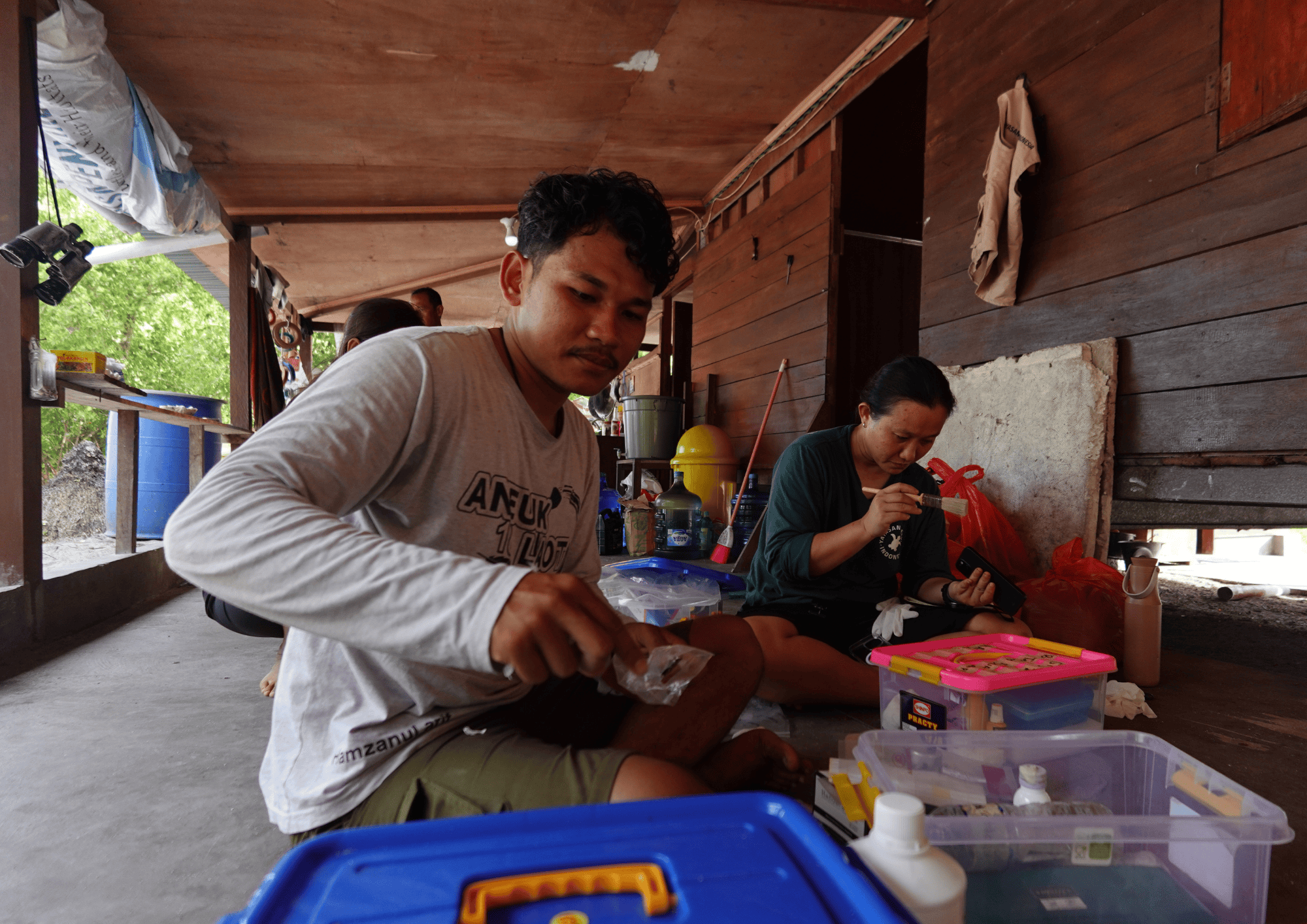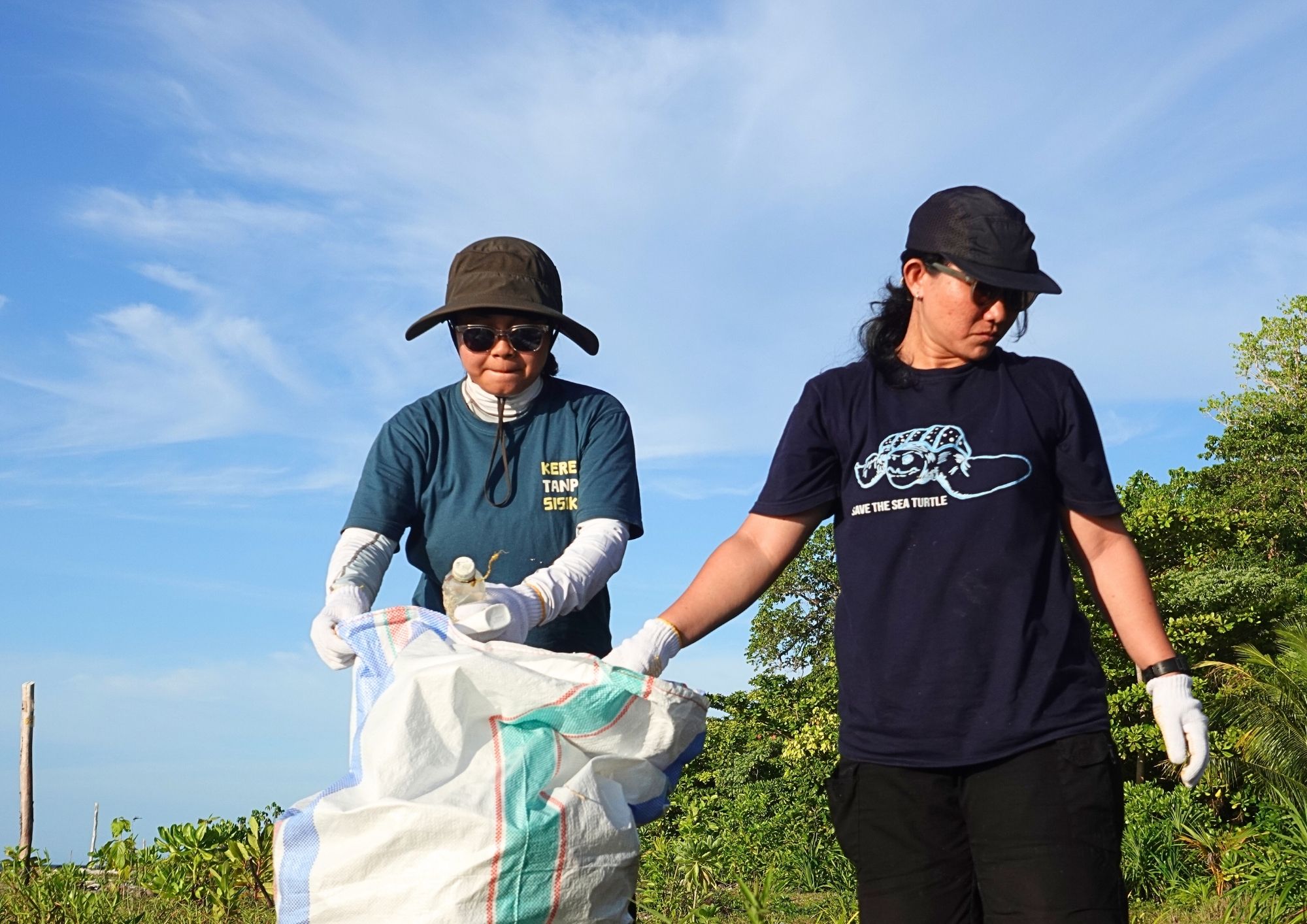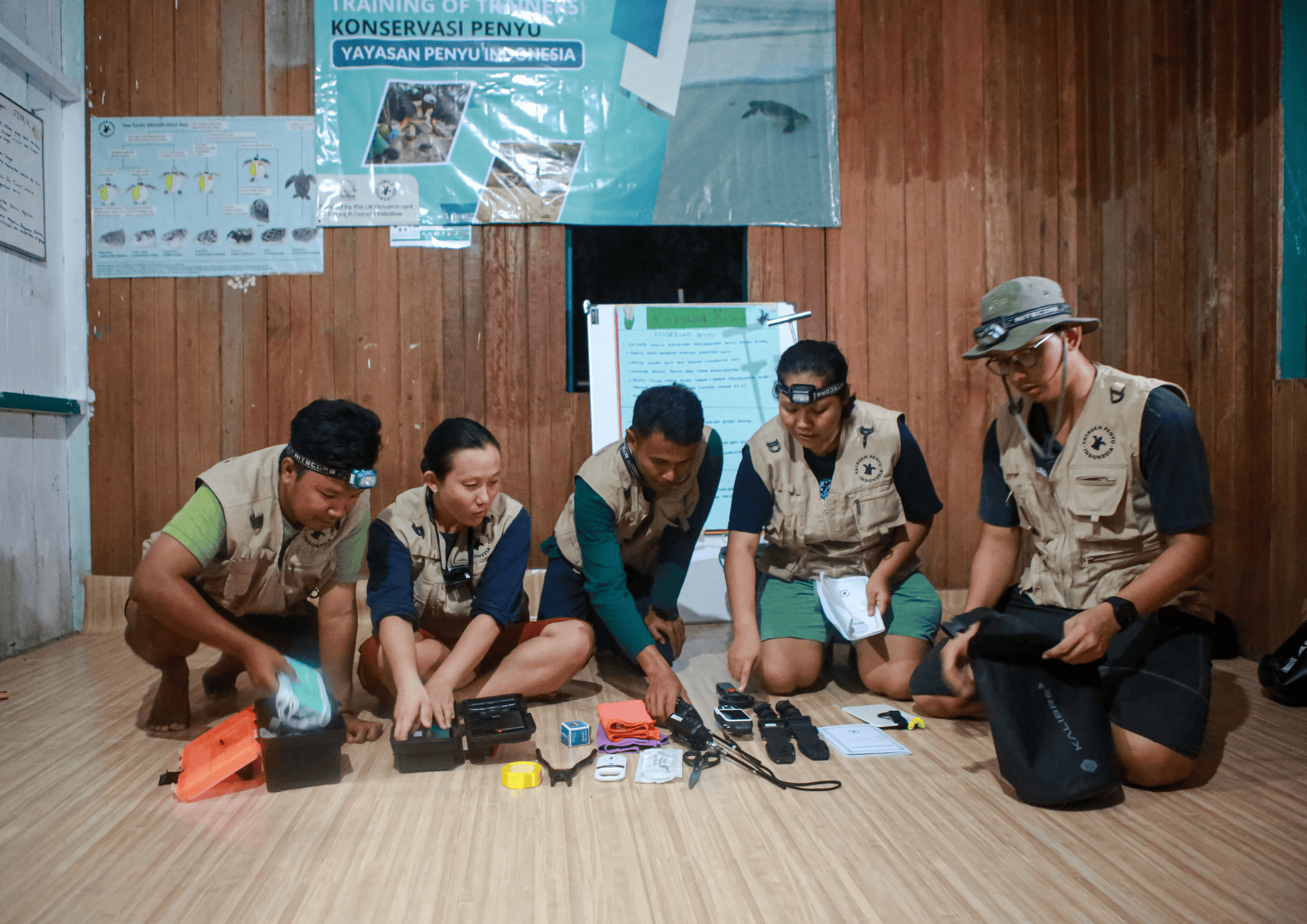If you love the beach, don’t mind walking under the dark night sky, and have a deep concern for nature, you might already have the basic qualities needed to become a sea turtle ranger. Being a ranger is no easy task—it requires resilience, honesty, and a high level of dedication. While most people are fast asleep, rangers begin their shift: patrolling the coastline to ensure that mama sea turtles can lay their eggs and return safely to the sea. Rangers are on the frontlines of turtle conservation, working quietly but making a tremendous impact on the survival of a species threatened with extinction.
So, what does a ranger’s daily routine actually look like? Let’s take a closer look at the daily activities of the rangers at Yayasan Penyu Indonesia.

Preparing for Patrol
Everything starts with careful preparation. Before heading out to the beach, rangers gather and prepare all their patrol equipment. Each item is packed neatly into a single box and cleaned to ensure it functions optimally. Once everything is ready, the team assembles for a short briefing. Good coordination is essential for a smooth and effective night patrol.
Night Patrol with Red Light
Upon arriving at the nesting beach, rangers use only red light to minimize disturbance to the sea turtles coming ashore. They walk along the sand, observing tracks left behind. Sharp observation is key—sea turtle tracks serve as initial clues to help rangers locate the sea turtles or their nests.
Measuring and Protecting Nests
When a nesting sea turtle is found, rangers begin documenting the event. Once the sea turtle has finished laying her eggs and starts returning to the ocean, rangers monitor her from a safe distance.
If the nest is in a high-risk area—such as one exposed to tides, river flooding, or potential egg theft—rangers will relocate the eggs to a hatchery, a semi-natural protected nest site.
Hatching Monitoring
During patrols, rangers monitor the hatching success rates in both hatcheries and natural nests. This helps assess the effectiveness of conservation efforts and identify the factors that influence them. The data collected is used to guide nest management decisions for the next breeding season.
Releasing Hatchlings to the Sea
Rangers also perform regular checks on the hatchery. When hatchlings emerge, they are recorded and released to the sea as soon as possible. At this moment, rangers turn off their lights so the hatchlings can follow the natural light on the horizon, which guides them safely to the ocean.
Patrolling Through the Night
The work doesn’t stop when the sun goes down. Rangers divide into three shifts to ensure round-the-clock beach patrols. They continue walking the beach throughout the night, staying alert for fresh tracks or sea turtles coming ashore in the final hours before dawn. At sunrise, they carry out additional surveys, clean up, and reorganize equipment to prepare for the next patrol.
Beach Clean-Up
One of the key parts of a ranger’s routine is beach clean-up. Debris and waste that wash up along the shore can pose a serious threat to sea turtles and hatchlings. This activity not only helps keep nesting habitats clean and safe, but also serves as an environmental education effort for local communities and beach visitors.

Looking at their routine, it’s clear that being a ranger requires a strong calling. So, are you interested in becoming a ranger? Do you think you could handle the routine? Or do you have your own way of supporting sea turtle conservation and protecting their habitat in Indonesia? Remember, even the smallest step can make a big difference for sea turtles on the brink of extinction.
Pictures: Perdiansyah, Alya Rosyadah, M. Ishak



